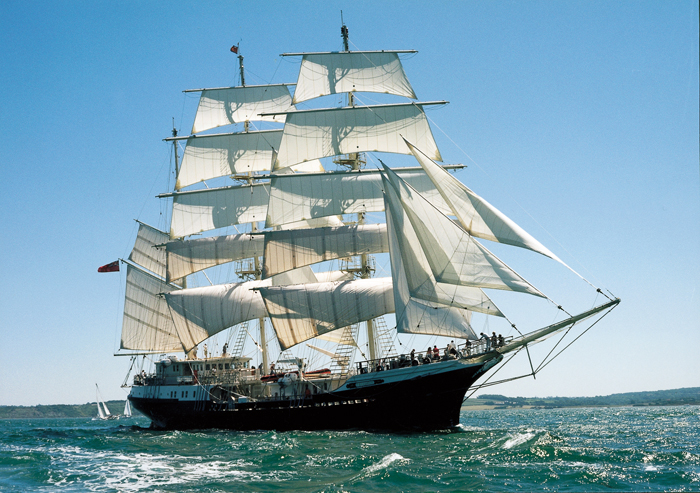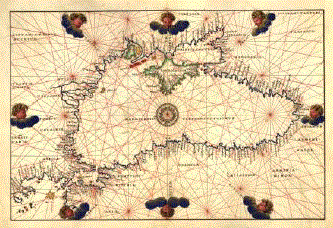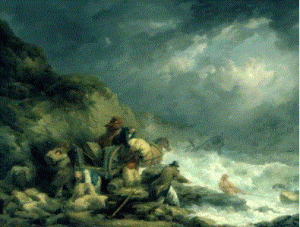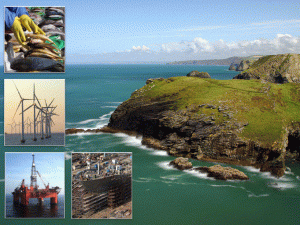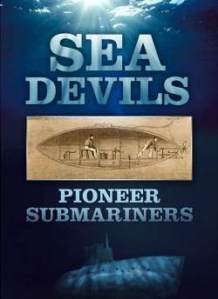Shipping investment is returning to favour. The amount of money invested in new tankers, bulk carriers and container ships last year was dramatically higher than seen in the previous twelve months. Shipping investors perceived a period of better markets approaching (if still some way off), while the drastic reduction in shipbuilders’ prices for new buildings seen over the past few years greatly increased the attractions of ordering new tonnage, especially more economical tonnage. But will these huge investments prove well-timed? Accurately predicting the cycle has always been a hazardous exercise.
The statistics for new building orders placed at world shipyards in 2013 are impressive. Bulk carriers led the pack: 937 vessels with a capacity of 80 million deadweight tonnes were ordered, one-sixth more than the total for the previous two years together. Tanker contracts, 376 ships of 34m dwt, exceeded by two-fifths the previous two years’ volume. Container ship orders, by contrast, at 223 ships totalling 21m dwt, were one-fifth lower based on the same comparison, but this amount was still far higher than seen in the immediately preceding year. These calculations, based on provisional figures compiled by Clarksons Research, demonstrate the massive scale of renewed enthusiasm for capital investment spending within the industry.
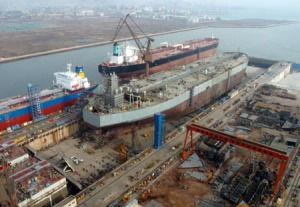
Despite persistent worries about where investment funds would be obtained, substantial new money became available. Stories about the traditional providers of finance, the shipping banks, withdrawing from the market remained at the forefront, but other investors stepped in. As the incentives appeared to improve, amid signs of a bottoming-out of the long shipping recession, private equity funds, hedge funds and various alternative sources gained prominence.
Combined with shipowners’ internally generated funds, the external sources were sufficient to enable an estimated $104 billion to be invested in new buildings of all types in 2013, a 16 percent increase from the previous year. Investment in tankers, bulk carriers and container ships last year was more than double the value seen in the preceding twelve months. By contrast, investment in the now very large offshore sector saw a huge reduction, limiting growth in the grand total.
Trade growth incentives
Looking at how trade has been growing in the past few years, shipping investors can be forgiven for thinking positively. Global seaborne trade in all cargo types, during the period of four years from 2010 to 2013 (including an estimate for last year), averaged remarkably strong 5.5 percent growth annually. This performance is somewhat exaggerated by including the ‘bounceback’ year of 2010, when a recovery took place from the effects of the world financial crisis and ensuing severe global recession. Nevertheless, it is still a very creditable achievement amid lacklustre growth in the world economy.
A glance at seaborne trade growth rates over the past three decades reveals how unusual it is to find a phase of similar length and strength. There was only one: 2003 to 2006, within the ‘boom’ period, when annual increases over four years averaged 5.4 percent. Given that both ‘super growth’ periods happened within the new millennium, and that prospects for more trade expansion in the future are clearly visible, it is not altogether surprising that eagerness to invest in new shipping capacity is evident.
In previous cycles, a significant period of more robust trade expansion and vessel demand was often reflected in high freight markets, until vessel supply caught up and overtook the demand trend when additional newbuildings became available. This pattern has not occurred in the past few years, at least not on a sustainable basis.
The explanation is fairly straightforward. After the freight market boom ended in 2008, surplus transport capacity was created by enormous fleet expansion, caused by what proved to be excessive ordering of new ships while the boom was still in progress. This over-capacity has overwhelmed even a sustained robust upwards trend in seaborne trade movements in the past few years. Mainly subdued freight markets resulted, although there have been temporarily stronger episodes. But the excess capacity is being reduced, and demand-supply gaps are closing or likely to begin closing soon, hence improving the prospects for freight market returns and, in turn, improving the investment outlook.
Two charts in the latest monthly report of shipbroking company Platou clearly demonstrate how much surplus capacity has occurred in the global tanker and bulk carrier fleets during recent years. These charts provide a general view, because circumstances vary among different sizes and types of tonnage within the sectors. For tankers, fleet utilisation is shown as declining from around 90 percent at the 2008 peak, to nearer 80 percent last year, although towards year end there were signs of an improvement emerging. For bulk carriers, the decline was more dramatic, from close to full 100 percent fleet utilisation in 2007-08, to around 85 percent in 2013, followed similarly by signs of a distinct upturn getting underway later in the year.
More enjoyable times ahead?
Bulk carriers have re-emerged as a favourite for shipping investors. The rehabilitation of this sector’s attractions last year has raised some eyebrows. It has suggested the possibility that renewed enthusiasm, and resulting new capacity ordered for delivery in the next couple of years, could delay a sustainable freight market recovery.
A clear example of how such a setback can be triggered is provided by events in 2010. At the beginning of that year, there was still a colossal volume of orders for bulk carrier newbuildings at shipyards around the world, totalling 298m dwt. This quantity, mostly scheduled for delivery over the following two or three years, was equivalent to 65 percent of the existing global bulk carrier fleet, implying massive capacity expansion ahead. During 2010, shipping investors’ optimism about a freight market recovery resulted in a further huge 103m dwt of orders being placed, raising the total order book even higher despite its already vast size.
The consequences of this questionable eagerness are still being observed today. For individual investors, there are often compelling reasons justifying the purchase of new tonnage, but if too many have the same idea at the same time the results can be unpleasant.
So what are the main factors which will determine whether the large investments seen over the past twelve months and previously, in tankers, bulk carriers and container ships, will prove worthwhile in the years ahead? At the beginning of 2014, according to Clarksons figures, new tankers on order at shipyards were equivalent to 13 percent of the existing world tanker fleet. Much higher percentages were evident elsewhere. In the container ship sector, the equivalent of 20 percent of existing tonnage was on order, and in the bulk carrier sector the figure was similar at 21 percent. Most of the new tonnage is scheduled for delivery this year and next year. These percentages imply considerable fleet expansion.
On the ship demand side of the picture, trade growth could absorb the new capacity. Currently, there are clear signs pointing to global seaborne trade growing solidly over the next few years, although prospects for crude oil trade to increase are limited. Much depends on the world economy’s performance: there is some anxiety about whether China, the main driver of growth in many market segments, will continue to perform as strongly as seen in recent years. Changes in geographical trade patterns, affecting voyage distances and tonne-miles (a more accurate measure of shipping demand), also will be influential.
On the ship supply side of the picture, newbuildings entering the fleet will be partly offset by scrapping (recycling) old or uneconomic vessels. The extent of this offset is always difficult to estimate. Many new ships are specifically designed to cut bunker fuel consumption: these could accelerate replacement of older tonnage. Then there is the productivity factor. Large proportions of the existing fleets are ‘slow steaming’ to reduce fuel costs, amid subdued markets and vessel earnings. The annual transport capacity provided by these ships could expand if, as a result of improving markets, slow steaming is reduced, enabling ships to perform more voyages in the same time period.
It is a conundrum, a large one! In the global shipping business, great uncertainties are not abnormal, and are what experienced shipowners are quite familiar with. Whether all the newer players are as familiar with the imponderables remains to be seen. Recent investments in new ships certainly have the potential for proving highly lucrative, if changes in market conditions greatly reduce over-capacity. If that does not happen the results may be much less palatable. It is not an industry for the risk-averse, and this characteristic explains why the shipping business is so exciting for investors.
Richard Scott
Visiting lecturer, Greenwich Maritime Institute and MD, Bulk Shipping Analysis


